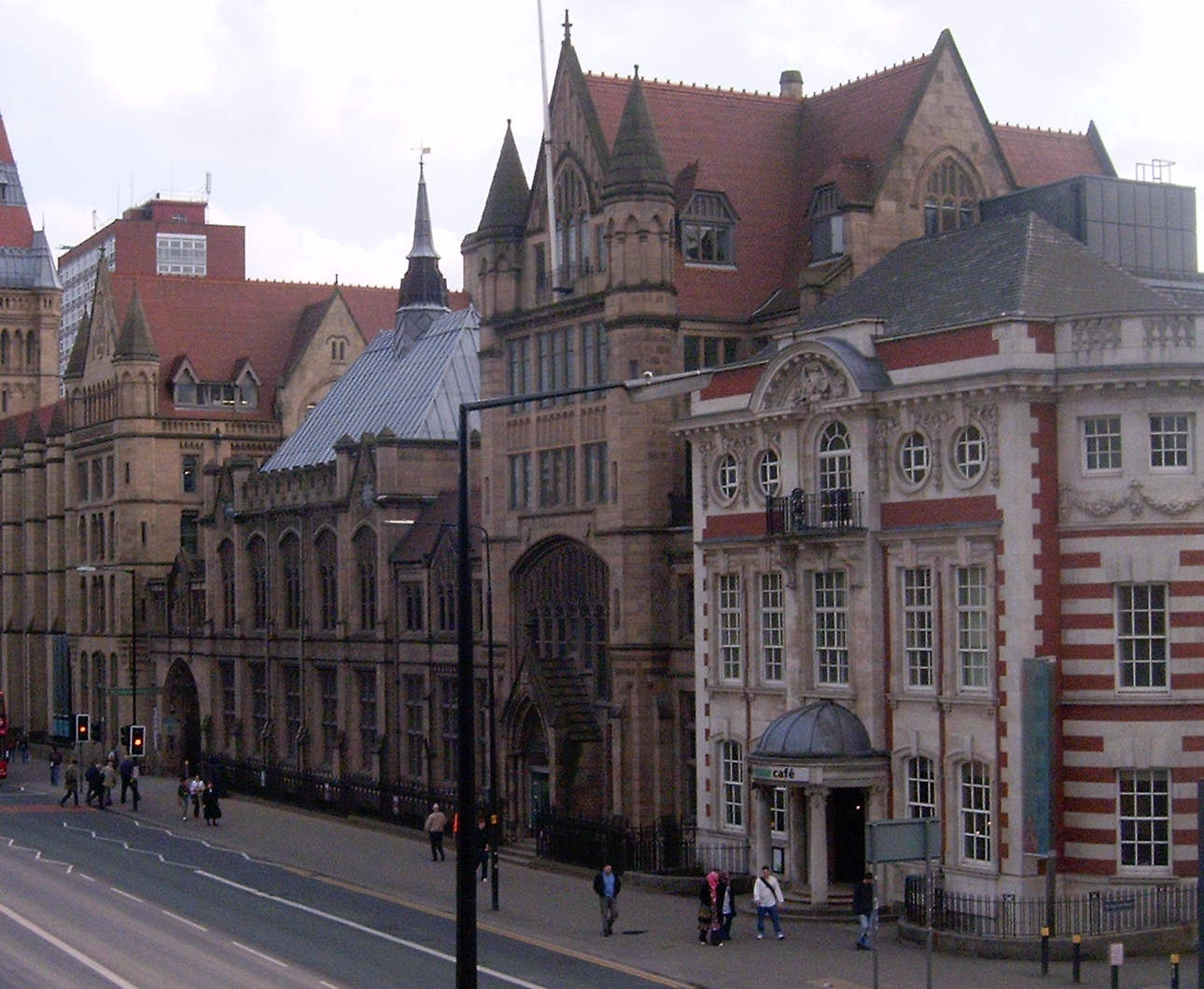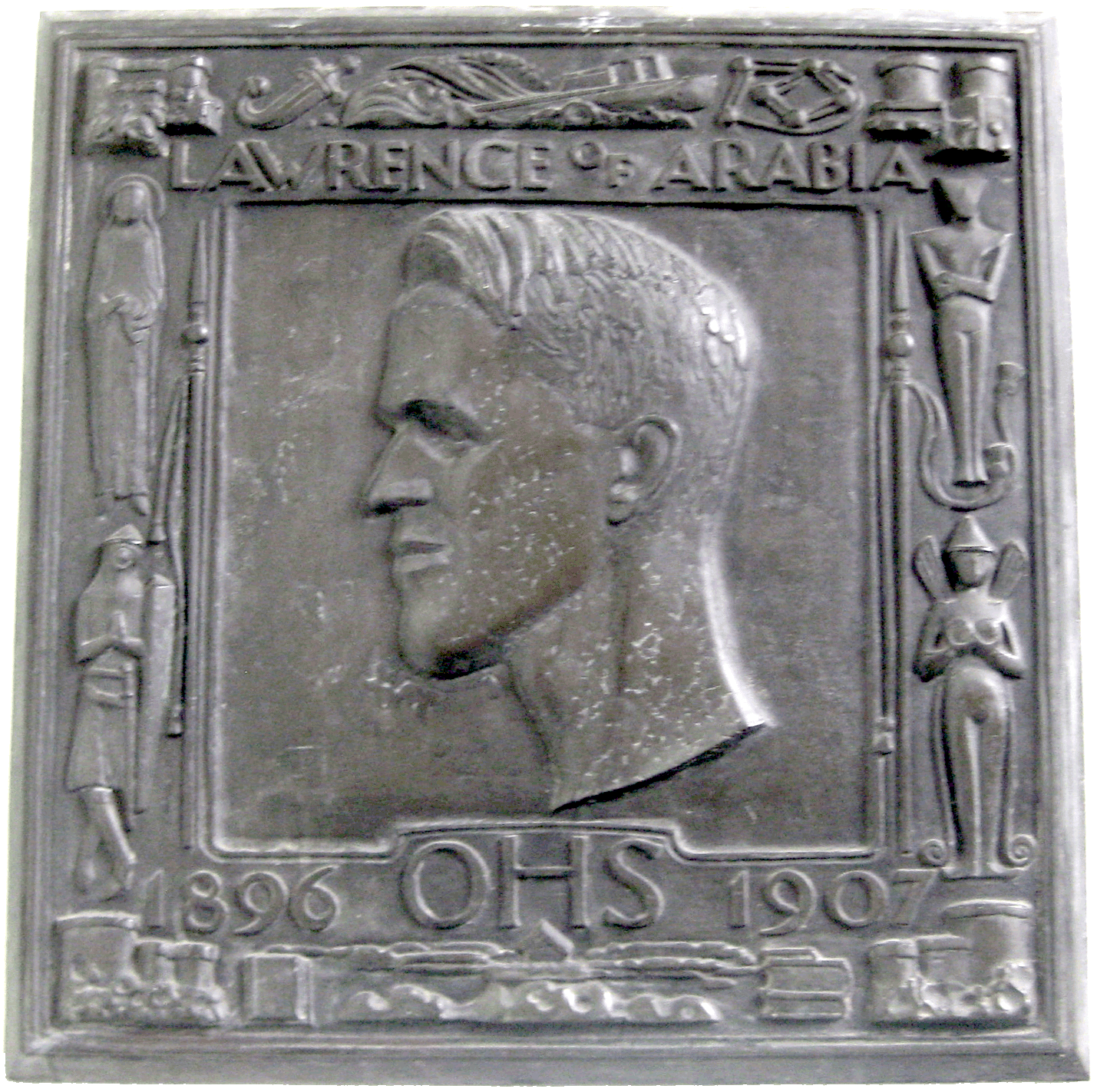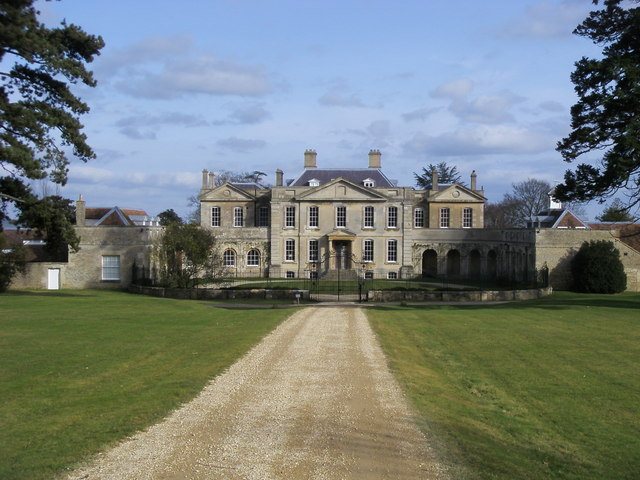|
Frederick Codd
Frederick Codd (born 1832 in East Dereham) was a British Gothic Revival architecture, Gothic Revival architect and speculative builder who designed and built many Victorian houses in North Oxford, England. Born in 1832 in East Dereham in Norfolk., he was initially based in London but he was active in Oxford by 1865. He was a pupil of William Wilkinson (architect), William Wilkinson, another North Oxford architect, and their styles are similar. He designed houses on the west side of Banbury Road, in Bradmore Road, Canterbury Road, Crick Road and Norham Gardens, amongst other locations. In central Oxford, Codd designed shops and offices in King Edward Street south of the High Street, Oxford, High Street during 1871–75 for Oriel College, Oxford, Oriel College. He is also involved in the rebuilding of Queen Street, Oxford, Queen Street during 1875–78. Woodperry House in Oxfordshire was enlarged in 1879–80 when the porch and two pedimented wings were added, designed by Codd, ... [...More Info...] [...Related Items...] OR: [Wikipedia] [Google] [Baidu] |
Banbury Road
Banbury Road is a major arterial road in Oxford, England, running from St Giles' at the south end, north towards Banbury through the leafy suburb of North Oxford and Summertown, with its local shopping centre. Parallel and to the west is the Woodstock Road, which it meets at the junction with St Giles'. To the north, Banbury Road meets the Oxford Ring Road at a roundabout. The road is designated the A4165 (which continues for a short distance as Oxford Road to Kidlington). Prior to the building of the M40 motorway extension in 1990, the road formed part of the A423 from Maidenhead to Coventry. __TOC__ Buildings The former Mathematical Institute of Oxford University is at the lower end of the road on the east side. Opposite Keble Road is St Giles' Church, built in 1120 and consecrated in 1200. Further north are the Denys Wilkinson Building (astrophysics) and the prominent 1960s Thom Building of the Engineering Science department. One of the University's former women's ... [...More Info...] [...Related Items...] OR: [Wikipedia] [Google] [Baidu] |
King Edward Street
King Edward Street is a street running between the High Street to the north and Oriel Square to the south in central Oxford, England. To the east is the "Island" site of Oriel College, one of the colleges of Oxford University. To the west are shops, including Shepherd & Woodward, the leading University outfitters, fronting onto the High Street. King Edward Street is officially designated as part of the A420 road due to the blockage of the High Street to normal traffic. The street was only created in 1872–73 by Oriel College when 109 and 110 High Street were demolished, so it is much wider than other older streets off the High Street. The buildings were mostly designed by Frederick Codd. On the wall of the first floor of No. 6, there is a large metal plaque with a portrait of Cecil Rhodes; underneath is the inscription: In this house, the Rt. Hon Cecil John Rhodes kept academical residence in the year 1881. This memorial is erected by Alfred Mosely in recognition of th ... [...More Info...] [...Related Items...] OR: [Wikipedia] [Google] [Baidu] |
Manchester University Press
Manchester University Press is the university press of the University of Manchester, England and a publisher of academic books and journals. Manchester University Press has developed into an international publisher. It maintains its links with the University. Publishing Manchester University Press publishes monographs and textbooks for academic teaching in higher education. In 2012 it was producing about 145 new books annually and managed a number of journals. Areas of expertise are history, politics and international law, literature and theatre studies, and visual culture. MUP books are marketed and distributed by Oxford University Press in the United States and Canada, and in Australia by Footprint Books; all other global territories are covered from Manchester itself. Some of the press's books were formerly published in the US by Barnes & Noble, Inc., New York. Later the press established an American office in Dover, New Hampshire. Open access Manchester University Pr ... [...More Info...] [...Related Items...] OR: [Wikipedia] [Google] [Baidu] |
Oxford And Abingdon Building Society
Oxford () is a city in England. It is the county town and only city of Oxfordshire. In 2020, its population was estimated at 151,584. It is north-west of London, south-east of Birmingham and north-east of Bristol. The city is home to the University of Oxford, the oldest university in the English-speaking world; it has buildings in every style of English architecture since late Anglo-Saxon. Oxford's industries include motor manufacturing, education, publishing, information technology and science. History The history of Oxford in England dates back to its original settlement in the Saxon period. Originally of strategic significance due to its controlling location on the upper reaches of the River Thames at its junction with the River Cherwell, the town grew in national importance during the early Norman period, and in the late 12th century became home to the fledgling University of Oxford. The city was besieged during The Anarchy in 1142. The university rose to domina ... [...More Info...] [...Related Items...] OR: [Wikipedia] [Google] [Baidu] |
Bevington Road
Bevington Road is a residential road in central North Oxford, England. The road runs between Woodstock Road (opposite Observatory Street) to the west and Banbury Road to the east. Winchester Road leads north from halfway along Bevington Road. The road was previously known as Horse and Jockey Road. A public house opposite the eastern end of the road on Woodstock Road on the corner with St Bernard's Road, called the ''Horse and Jockey'', was a reminder of this name. In the 1850s there was a plan to run a railway line just to the north of the road, but this never materialised. The houses are in the traditional North Oxford brick-built Victorian Gothic style, dating from 1865 to 1875. Plots on the south side of the road were sold in August 1865 by St John's College, which own much of the land in the area. Architects of the houses include Frederick Codd and William Wilkinson. To the south is St Anne's College, one of the former women's colleges of the University of Oxford ... [...More Info...] [...Related Items...] OR: [Wikipedia] [Google] [Baidu] |
Cowley Road
__NOTOC__ Cowley Road is an arterial road in the city of Oxford, England, running southeast from near the city centre at The Plain near Magdalen Bridge, through the inner city area of East Oxford, and to the industrial suburb of Cowley. The central shopping is at Cowley Road is also the main shopping street of East Oxford, and in the evenings it is the area's main leisure district. Cowley Road, like most of Oxford, has an ethnically and economically diverse population. This includes significant, long-standing South Asian and Afro-Caribbean communities, who have been joined more recently by East European, Chinese and African arrivals. Alongside these ethnic groups, East Oxford plays host to many members of the city's academic population, both undergraduate and academic staff, and is home to many politically active groups. Cowley Road has high levels of both road traffic and pedestrian traffic, and space for both is limited. In 2005, Oxfordshire County Council invested about ... [...More Info...] [...Related Items...] OR: [Wikipedia] [Google] [Baidu] |
University Of Oxford
The University of Oxford is a collegiate research university in Oxford, England. There is evidence of teaching as early as 1096, making it the oldest university in the English-speaking world and the world's second-oldest university in continuous operation. It grew rapidly from 1167 when Henry II banned English students from attending the University of Paris. After disputes between students and Oxford townsfolk in 1209, some academics fled north-east to Cambridge where they established what became the University of Cambridge. The two English ancient universities share many common features and are jointly referred to as ''Oxbridge''. Both are ranked among the most prestigious universities in the world. The university is made up of thirty-nine semi-autonomous constituent colleges, five permanent private halls, and a range of academic departments which are organised into four divisions. All the colleges are self-governing institutions within the university, each controlling ... [...More Info...] [...Related Items...] OR: [Wikipedia] [Google] [Baidu] |
George Street, Oxford
George Street is a street in central Oxford, England. It is a shopping street running east–west. Overview Its eastern end meets Broad Street at a crossroads with Cornmarket Street to the south and Magdalen Street to the north. Its western end meets Hythe Bridge Street at a crossroads with Worcester Street. The New Theatre Oxford, Oxford's main commercial theatre, is on the north side of the street. For a period, it was the Apollo Theatre but it has regained its earlier name. The Burton Taylor Studio is in Gloucester Street, which runs off the north side of George Street. Number 40 on the north side is the OFS Studio. Gloucester Green bus station is off the north of George Street at the western end. Companies including the Oxford Bus Company and Stagecoach in Oxfordshire operate services from here. History George Street is outside the formerly walled section of Oxford, running parallel with the medieval wall. Buildings on the south side of the street occupy plots ... [...More Info...] [...Related Items...] OR: [Wikipedia] [Google] [Baidu] |
Oxford High School For Boys
The City of Oxford High School for Boys (a.k.a. Oxford High School for Boys and City of Oxford School) was founded in 1881 by Thomas Hill Green to provide Oxford boys with an education which would enable them to prepare for University. History It was administered by the City of Oxford Education Committee, with around 400 boys enrolled. The school finally closed in 1966, when it was combined with what was then Southfield Grammar School to form a grammar school, known as Oxford School at that time (the present Oxford Spires Academy). The building The Victorian stone building, bearing the arms of both the City and University, was designed by Sir Thomas Jackson in Oxford, England, and still stands at the corner of George Street and New Inn Hall Street. Additional classrooms were later added in the playground, a space that was contained on the south side by an extensive length of the city's mediaeval wall. The school remained here until 1966, when it moved to the Southfield Gramm ... [...More Info...] [...Related Items...] OR: [Wikipedia] [Google] [Baidu] |
Sir Thomas Jackson
Sir Thomas Graham Jackson, 1st Baronet (21 December 1835 – 7 November 1924) was one of the most distinguished British architects of his generation. He is best remembered for his work at Oxford, including the Oxford Military College at Cowley, the university's Examination Schools, most of Hertford College (including the Bridge of Sighs over New College Lane), much of Brasenose College, ranges at Trinity College and Somerville College, the City of Oxford High School for Boys, and the Acland Nursing Home. Life and career Much of his career was devoted to the architecture of education, and he worked extensively for various schools, notably Giggleswick and his own alma mater Brighton College. Jackson designed the former town hall in Tipperary Town, Ireland. He also worked on many parish churches and the college chapel at the University of Wales, Lampeter. He is also famous for designing the chapel (amongst other things) at Radley College. He was educated at Brighton College a ... [...More Info...] [...Related Items...] OR: [Wikipedia] [Google] [Baidu] |
Oxfordshire
Oxfordshire is a ceremonial and non-metropolitan county in the north west of South East England. It is a mainly rural county, with its largest settlement being the city of Oxford. The county is a centre of research and development, primarily due to the work of the University of Oxford and several notable science parks. These include the Harwell Science and Innovation Campus and Milton Park, both situated around the towns of Didcot and Abingdon-on-Thames. It is a landlocked county, bordered by six counties: Berkshire to the south, Buckinghamshire to the east, Wiltshire to the south west, Gloucestershire to the west, Warwickshire to the north west, and Northamptonshire to the north east. Oxfordshire is locally governed by Oxfordshire County Council, together with local councils of its five non-metropolitan districts: City of Oxford, Cherwell, South Oxfordshire, Vale of White Horse, and West Oxfordshire. Present-day Oxfordshire spanning the area south of the ... [...More Info...] [...Related Items...] OR: [Wikipedia] [Google] [Baidu] |
Woodperry House
Woodperry House is a Grade I listed building in Stanton St John, South Oxfordshire, England. Woodperry was built from 1728 for John Morse, a London goldsmith and partner in Child & Co. Morse owned a house in Woodstock at the entrance to Blenheim Palace that influenced the design, with the final Palladian style attributed to the Oxford architect William Townesend. Townsend also was the master mason on the Clarendon Building designed by Nicholas Hawksmoor, with the front of Woodperry similar to Clarendon. Thomas Fawsett was the principal joiner, and Charles Scriven the glazier. The final house cost £12,000. Morse never lived in Woodperry, and after buying the larger Wooburn House in Buckinghamshire from the estate of the late Duke of Wharton, never finished Woodperry. He had left the property in his will to his niece, and in the meantime allowed his gardener William Pepall and his family to live in the house. But after falling out with his niece, Morse changed his will. After his ... [...More Info...] [...Related Items...] OR: [Wikipedia] [Google] [Baidu] |








